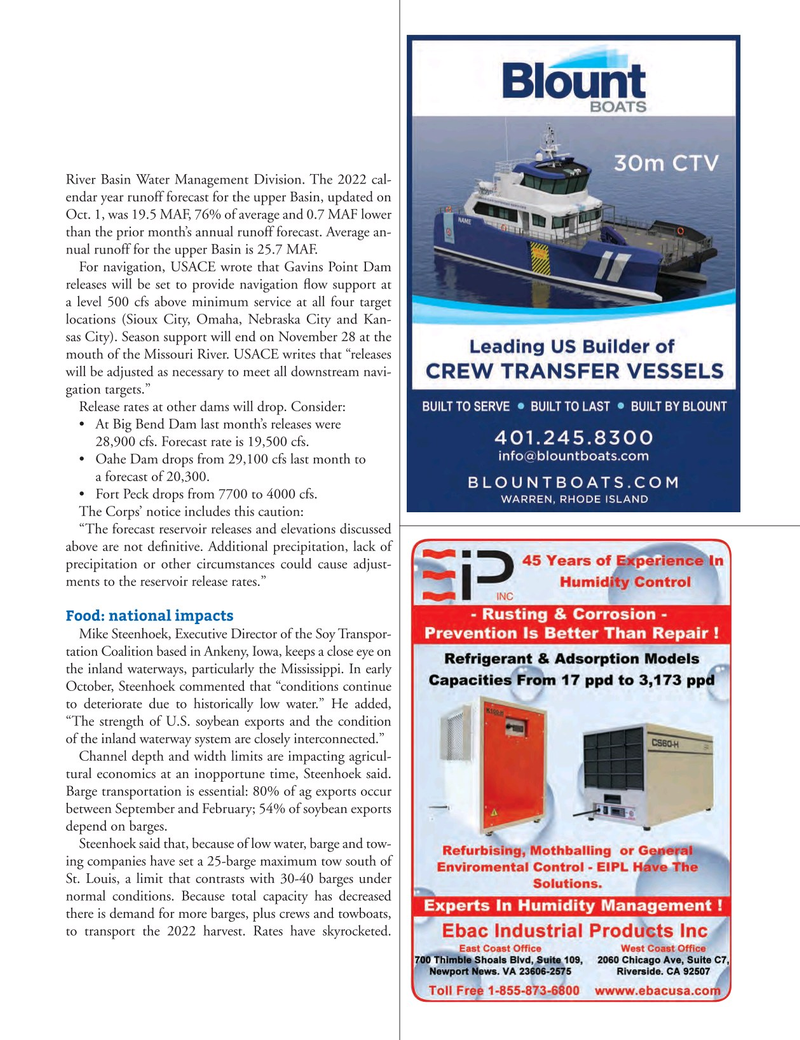
Page 37: of Marine News Magazine (November 2022)
Great Workboats of 2022
Read this page in Pdf, Flash or Html5 edition of November 2022 Marine News Magazine
River Basin Water Management Division. The 2022 cal- endar year runoff forecast for the upper Basin, updated on
Oct. 1, was 19.5 MAF, 76% of average and 0.7 MAF lower than the prior month’s annual runoff forecast. Average an- nual runoff for the upper Basin is 25.7 MAF.
For navigation, USACE wrote that Gavins Point Dam releases will be set to provide navigation ? ow support at a level 500 cfs above minimum service at all four target locations (Sioux City, Omaha, Nebraska City and Kan- sas City). Season support will end on November 28 at the mouth of the Missouri River. USACE writes that “releases will be adjusted as necessary to meet all downstream navi- gation targets.”
Release rates at other dams will drop. Consider: • At Big Bend Dam last month’s releases were 28,900 cfs. Forecast rate is 19,500 cfs.
• Oahe Dam drops from 29,100 cfs last month to a forecast of 20,300.
• Fort Peck drops from 7700 to 4000 cfs.
The Corps’ notice includes this caution: “The forecast reservoir releases and elevations discussed above are not de? nitive. Additional precipitation, lack of precipitation or other circumstances could cause adjust- ments to the reservoir release rates.”
Food: national impacts
Mike Steenhoek, Executive Director of the Soy Transpor- tation Coalition based in Ankeny, Iowa, keeps a close eye on the inland waterways, particularly the Mississippi. In early
October, Steenhoek commented that “conditions continue to deteriorate due to historically low water.” He added, “The strength of U.S. soybean exports and the condition of the inland waterway system are closely interconnected.”
Channel depth and width limits are impacting agricul- tural economics at an inopportune time, Steenhoek said.
Barge transportation is essential: 80% of ag exports occur between September and February; 54% of soybean exports depend on barges.
Steenhoek said that, because of low water, barge and tow- ing companies have set a 25-barge maximum tow south of
St. Louis, a limit that contrasts with 30-40 barges under normal conditions. Because total capacity has decreased there is demand for more barges, plus crews and towboats, to transport the 2022 harvest. Rates have skyrocketed.

 36
36

 38
38
